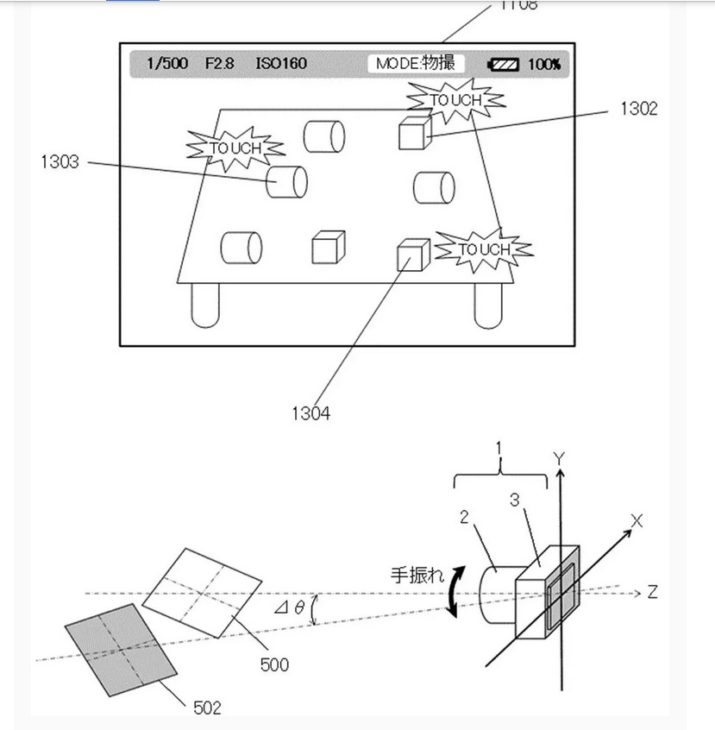Canon Patent: TS-R 180mm F3.5 And TS-R 100mm F2.8 Lenses
There must be a tilt-shift lens for the RF mount on Canon’s release radar, given all these pertinent patents we are seeing. I am pretty sure that soon the clickbaiters out there will break the news with rumors about…tilt-shift lenses for the RF mount.
Canon patent 2023162714 (Japan, published 11/9/2023) discusses optical formulas for two tilt-shift lenses for the RF mount:
- TS-R 180mm F3.5
- TS-R 100mm F2.8
From the patent literature:
- [Problem] To obtain an optical system that can greatly tilt an in-focus object surface while reducing composition shift while the entire system is small.
- BACKGROUND TECHNOLOGY: Photography that focuses on an object surface that is tilted with respect to a direction perpendicular to the optical axis is called tilt photography. In tilt photography, it is necessary to greatly tilt the surface of the object in focus in order to expand the range of image expression.
- As an optical system for realizing this photographing, an imaging optical system equipped with a tilt mechanism is known.
- On the other hand, in an imaging optical system having a tilt mechanism, the composition shifts (hereinafter also referred to as “composition shift”) when the system is tilted, which may impair convenience.
- On the other hand, an imaging optical system is known that includes a plurality of lens sections that move in a direction perpendicular to the optical axis direction (Patent Document 1). In Patent Document 1, during tilt photography, the lens section A moves in a direction perpendicular to the optical axis direction, and the lens section B moves in a direction perpendicular to the optical axis direction so as to correct the shift effect generated in the lens section A. By moving the lens in the vertical direction, it is possible to take tilted shots with small composition shifts.
- An imaging optical system that includes a plurality of lens units that move in a direction perpendicular to the optical axis direction as in Patent Document 1 moves the lens unit in a direction perpendicular to the optical axis direction during tilt photography. Aberrations occur due to optical eccentricity. The amount of aberration caused by this eccentricity increases as the amount of inclination of the object surface for tilt photography increases. In Patent Document 1, since the lens group A that moves in the direction perpendicular to the optical axis direction has negative refractive power, the height from the optical axis of off-axis light incident on the lens section B increases, and the lens The amount of eccentric aberration that occurs when portion B is decentered increases. Furthermore, since the height of the off-axis light from the optical axis increases, the diameter of the lens portion B increases. Therefore, it becomes difficult to increase the eccentricity of the lens portion B, and as a result, it is difficult to greatly tilt the object surface that is in focus.
- Accordingly, an object of the present invention is to provide an optical system that can greatly tilt the object surface in focus while reducing composition shift while the entire system is small, and an imaging apparatus having the same.
Example 1
- Focal length: 179.88
- F value: 3.60
- Half angle of view: 6.86
- Image height: 21.64
- Total length: 198.10
- Back focus: 27.03
Example 2
- Focal length: 193.86
- F value: 2.88
- Half angle of view: 6.37
- Image height: 21.64
- Total length: 182.73
- Back focus: 26.48
Example 3
- Focal length: 97.23
- F value: 2.88
- Half angle of view: 12.54
- Image height: 21.64
- Total length: 176.52
- Back focus: 14.71
Example 4
- Focal length: 89.85
- F value: 3.50
- Half angle of view: 13.54
- Image height: 21.64
- Total length: 184.06
- Back focus: 28.19
Example 5
- Focal length: 134.80
- F value: 3.50
- Half angle of view: 9.12
- Image height: 21.64
- Total length: 135.33
- Back focus: 37.11
More Canon patents are listed here.
[via asobinet]







